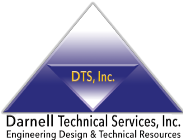California’s transportation infrastructure is undergoing a significant transformation. With rising demands for better mobility solutions, the integration of advanced technologies like Computer-Aided Design and Drafting (CADD) and Geographic Information Systems (GIS) is revolutionizing how we plan, design, and execute transportation projects. From highways to public transit systems, these tools bring precision, efficiency, and compliance to a once time-consuming process.
The Role of CADD in Highway and Bridge Design
CADD technology has become a critical tool in highway and bridge design across California. By leveraging powerful software, engineering teams can create detailed digital blueprints that streamline the design and construction process. Traditional methods often required manual drafting and repetitive revisions, but CADD enables users to make modifications quickly while maintaining accuracy.
CADD platforms enhance collaboration among project stakeholders by keeping all design files centralized and easily accessible. This ensures alignment across engineering teams, contractors, and regulatory agencies. Additionally, simulations and 3D renderings allow designers to identify potential issues before construction begins. This proactive approach saves both time and resources.
With California’s complex terrain and high seismic activity, designing resilient infrastructure is essential. CADD tools assist with advanced structural analyses that evaluate load distributions, material durability, and stress points, ensuring that highways and bridges meet safety and performance standards.
GIS Integration for Public Transit Planning and Environmental Analysis
Geographic Information Systems are equally instrumental in reshaping transportation. GIS provides spatial data and insights that are invaluable for public transit planning. By mapping population density, traffic flow, and land use patterns, transportation planners can optimize routes and station locations to better serve California’s diverse and growing population.
GIS is also a vital tool for environmental impact assessments. California has stringent environmental regulations for infrastructure projects, requiring detailed analysis of the surrounding ecosystems. GIS technology allows teams to map sensitive habitats, wetlands, and other ecological considerations in real time. This ensures that project designs minimize disruption to the environment while adhering to state and federal standards.
Furthermore, GIS improves public engagement. Presenting maps and data visually helps stakeholders understand the benefits and impacts of proposed projects. This transparency fosters trust and support from communities.
Ensuring Compliance with State and Federal Infrastructure Standards
California’s infrastructure projects must meet rigorous state and federal requirements, ranging from the California Environmental Quality Act (CEQA) to Federal Highway Administration (FHWA) guidelines. Compliance is non-negotiable, but ensuring it can be challenging without the right tools.
CADD and GIS simplify compliance by automating processes like documentation, permitting, and reporting. For instance, CADD software can automatically integrate design specifications that align with state building codes. Similarly, GIS can generate accurate spatial data analysis for environmental reports, reducing the margin of error associated with manual calculations.
Engineering firms utilizing these technologies can focus on delivering innovative solutions without worrying about delays caused by non-compliance. This efficiency is especially critical for public sector projects, where deadlines and budgets are tightly monitored.
The Efficiency and Accuracy Benefits of Digital Modeling
Digital modeling, powered by CADD, not only accelerates project timelines but also enhances design precision. Traditional draft-based workflows are prone to human error, while CADD tools offer advanced validation features to detect design flaws.
Three-dimensional modeling capabilities bring designs to life, allowing engineers to study infrastructure in a virtual environment before laying a single foundation. This minimizes unforeseen complications during construction and helps optimize material usage, leading to cost savings. For large-scale projects like freeway interchanges or rail systems, these advantages are a game-changer.
Additionally, CADD software integrates seamlessly with emerging technologies like Building Information Modeling (BIM) and artificial intelligence. This interconnected ecosystem drives smarter decision-making, reducing project risk and enhancing long-term success.
Supporting Success with Skilled Engineering Professionals
The potential of CADD and GIS in transportation projects is undeniable, but implementing these high-tech solutions effectively requires skilled professionals. Engineering teams must remain proficient in the latest tools and standards, while operations leaders need experts who can manage increasingly complex workflows.
By partnering with firms like Darnell Technical Services, companies can access the technical talent needed to unlock the full benefits of CADD and GIS. Whether it’s temporary staffing for a specific project milestone or long-term support, having the right team in place ensures projects stay on track and deliver maximum value.
Building the Future of Mobility
The advancement of California’s mobility depends on innovative approaches to transportation design. Technologies like CADD and GIS are paving the way for safer, smarter, and more efficient infrastructure. By leveraging these tools and partnering with experienced engineering professionals, companies can confidently meet the challenges of tomorrow’s transportation needs.
Looking for Trusted Technical Talent or Project Support?
At Darnell Technical Services, we connect companies with skilled professionals in engineering, architecture, and infrastructure. Whether you need temporary staffing or long-term project support, we’re here to help you succeed.
📞 Contact us today at Corporate (714) 285-0082 or Las Vegas Office (702) 829-8446 — let’s build something great together.








